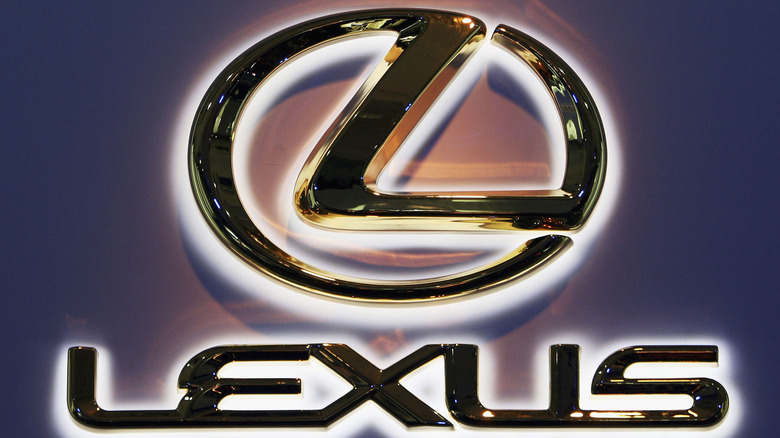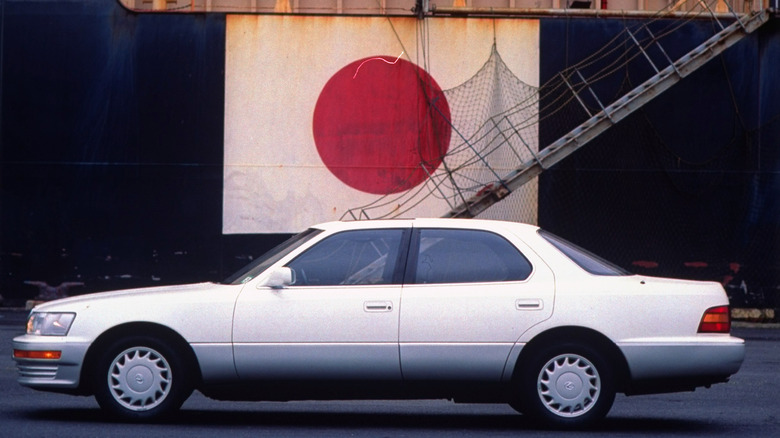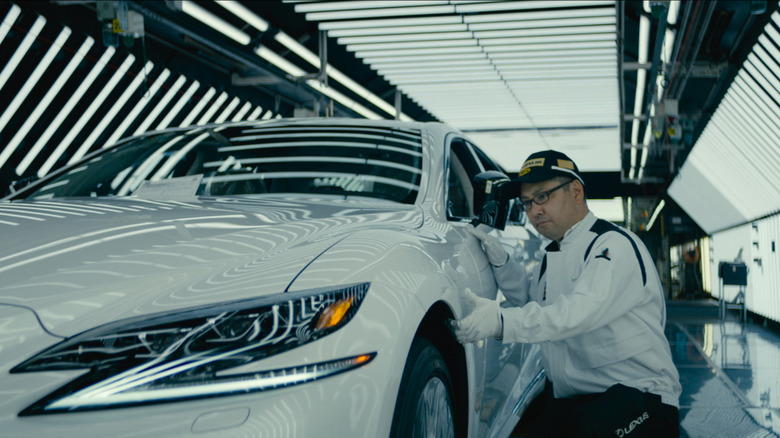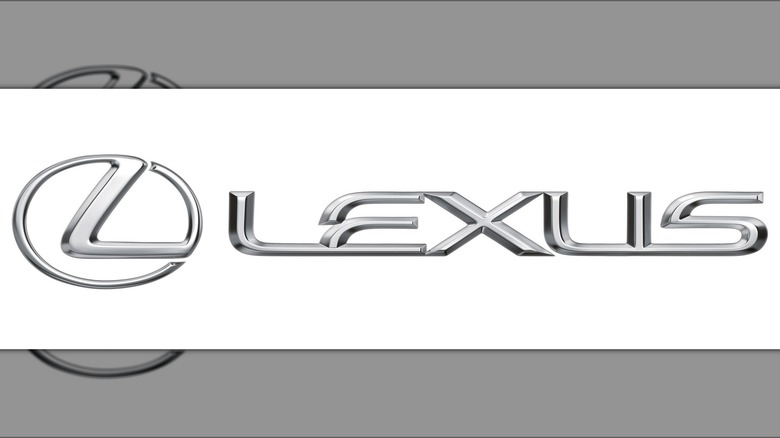5 Little-Known Facts About Lexus For Car Enthusiasts
Much in the same way that Honda owns Acura, Toyota owns Lexus. Both Acura and Lexus are the luxury brands of their respective parental ownership groups, but the vehicles that Toyota builds are vastly different from those of Lexus. Like every good origin story, the one for Lexus is also filled with twists, turns, and little-known facts that perhaps even the most die-hard car enthusiasts don't know. With that said, let's start at the beginning.
Lexus is a Japanese automaker, so it's ironic that a fateful business trip to one of the most luxurious beachside communities on the West Coast of the United States would change the direction of the brand entirely. During a clandestine meeting in 1983, Toyota's Chairman, Dr. Eiji Toyoda, challenged a select group of engineers and designers to build the world's best luxury car.
The team got to work and, in 1985, held a meeting in Laguna Beach, a Southern California coastal destination regarded as having some of the most beautiful beaches in the world. After seeing the small community's mix of prosperity with peak performance, they knew their focus needed to shift from simply redefining what a luxury car was to creating an entirely new car company with an identity all its own.
A wild ride to fruition
It would take another four years for the LS 400 to see the light of day. With all Lexus parties involved (including the Tahara plant where it was built) HQed in Japan, one would think its international debut would occur there. Nope. Instead, it was revealed at the North American International Auto Show in Detroit in January 1989.
Not only that, but when the global press launch event took place a few months later (May of '89), it was again not held in Japan but on the grounds of its German offices in Cologne, where luxury vehicles from BMW, Audi, and Mercedes-Benz reigned supreme. In fact, Lexus didn't start selling cars in its homeland until August 2005, when, in a grand marketing tactic, 142 dealerships all opened on the same day. Interest was so high it was reported that more than 250,000 people visited the dealerships collectively.
However, according to a report from the Financial Times in September 2006, only 10,000 vehicles were sold in Japan during 2005. Granted, it was towards the end of the year, but Toyota had a goal of selling twice that number in Japan. In contrast, 396,200 Lexus were sold globally.
Toyota claims that the development of the first Lexus cost them an estimated $1 billion. It took 24 different engineering teams, with a combined people power of 1,400 engineers, 2,300 technicians, 220 support workers, and 60 designers, to make the world's most luxurious vehicle.
The pursuit of perfection
From concept to reality, some 450 prototypes were tested. That's a lot of people, money, and testing. To put this into better focus, Toyota/Lexus created an automated welding process to make welds on the LS 400 1.5 times stronger than previously seen. Not impressive enough for you?
The vehicle's exterior body paint — sometimes five layers thick — is sprayed by people who must learn exacting body positions that best allow them to apply it to Lexus' exacting standards. In addition, they have to maintain their proficiency by taking four performance tests each year.
One team member's sole responsibility was to make sure every button and switch was, quite literally, "perfect." Lexus even provided that worker with three sets of fake fingernails to ensure perfection and customer satisfaction.
This incredible attention to detail can be boiled down to Japanese master craftsmen known as Takumi. They are reputed to find flaws mere fractions of a millimeter small, something even mechanized inspection machines can't do. What's more, they usually work in utter silence to better detect abnormal sounds coming from the car or the 1UZ-FE engine, one of the company's best and most reliable.
It's been said that it takes 10,000 hours of practice at something to become an expert. According to Lexus, it requires at least 30 years of experience – or the equivalent of 60,000 hours- before it will even consider someone for the role of a Takumi.
What's in a name?
In 1988, the Lexus name was picked because it conveyed a sense of luxury and high-end technology. An urban myth claims it's an acronym for "Luxury Export To The United States," but according to several sources, that is simply not the case.
Instead, the name came about through a much more laborious and far more corporate process than simply using an organically created acronym. First, Toyota approached its advertising partner, Saatchi & Saatchi, who, in turn, created an internal group known as Team One to tackle marketing. They then hired image consultants Lippincott & Margulies for a name, who came up with more than 200 (none of which were Lexus). This list was eventually whittled down to five, including Vectre, Verone, Alexis, Calibre, and Chaparel.
Alexis quickly jumped to the top, but because "Dynasty" was a hugely popular nighttime television soap opera featuring a main character named Alexis, they had to pivot. Upper management thought consumers would imagine the villainous human character before thinking of their vehicle, so the name was massaged and became Lexus. Still, other sources (i.e., official Lexus dealers) claim it's a mashup of the Latin word "Luxus," the French word "luxe," and the Greek word "lexicon."
Clearly, we've given you more than five facts here, but when a company's famous tagline ("A relentless pursuit of perfection") drives them to such great lengths to build the world's perfect luxury vehicle, maybe they deserve a few more.



